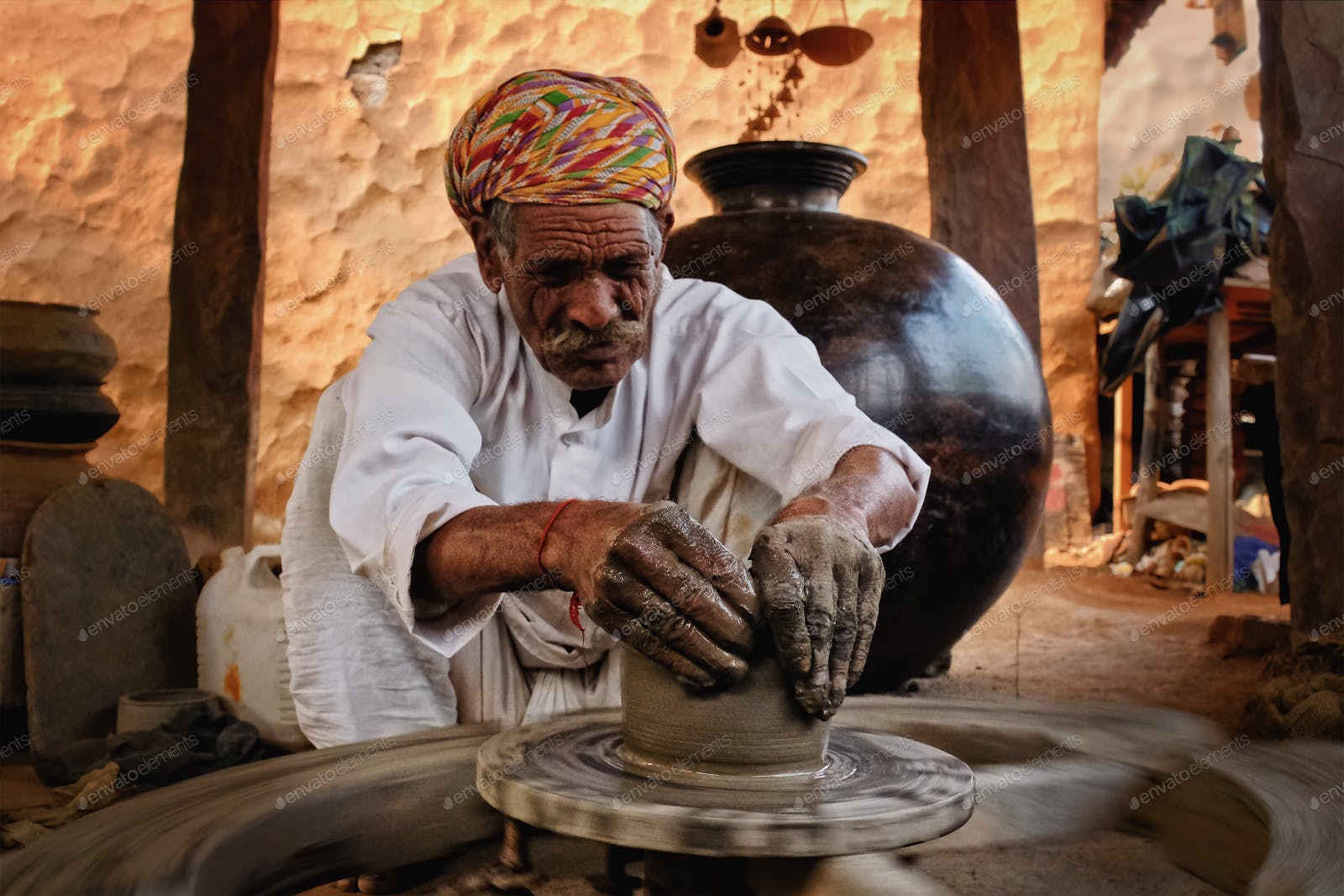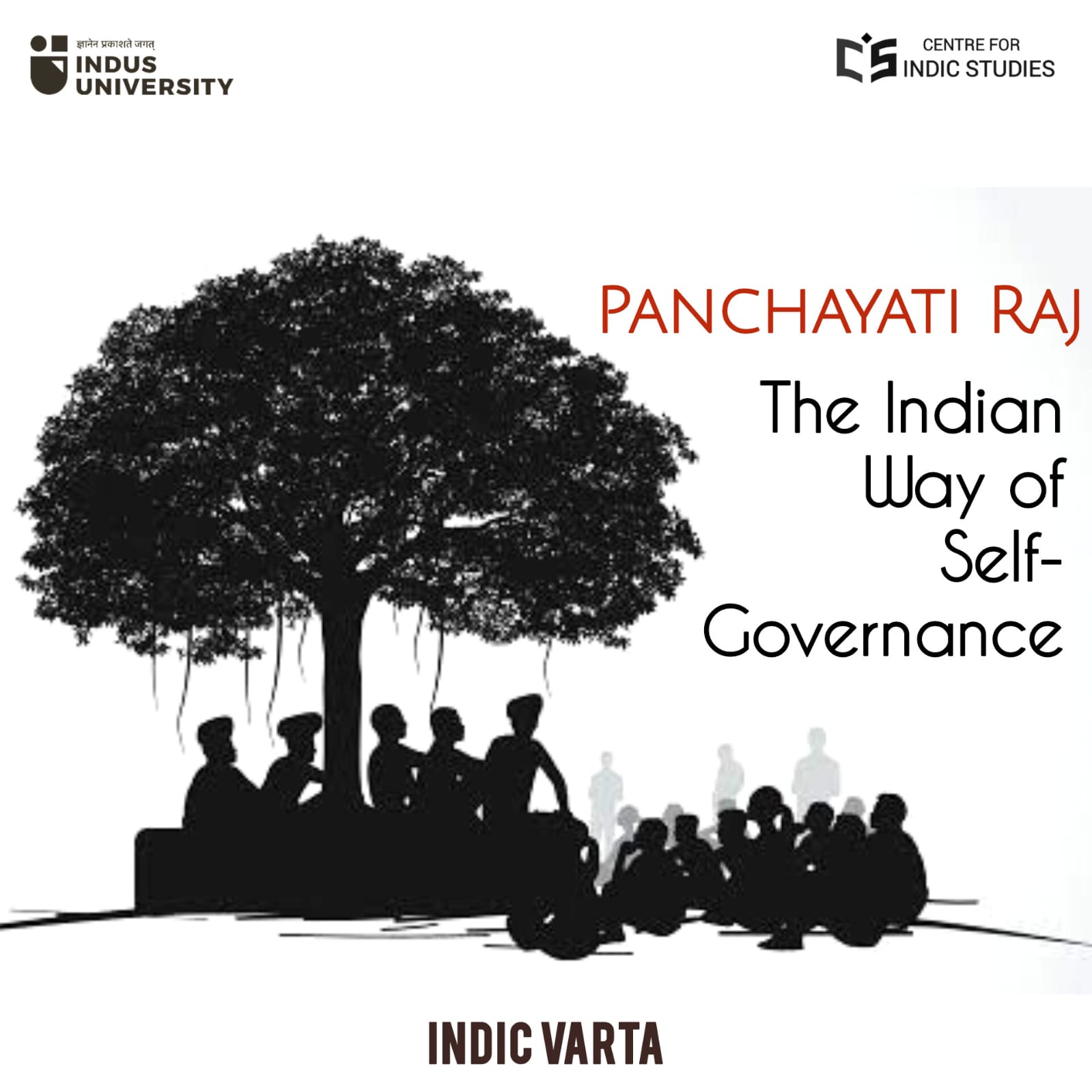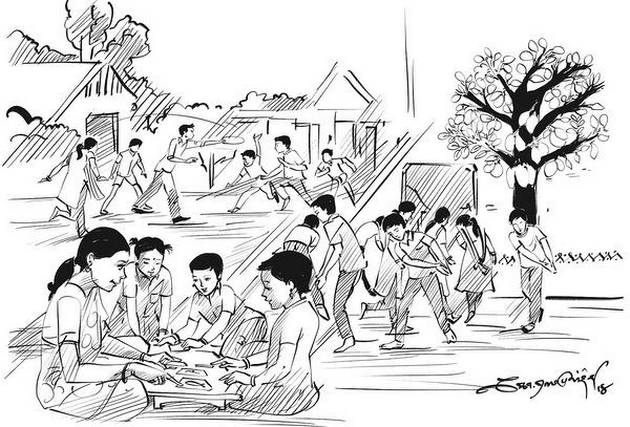- Visitor:56
- Published on:
Traditions of the Indian Craftsman
The Indian craftsman conceives of his art not as his own, nor as the accumulated skill of ages, but as originating in the divine skill of Visvakarma and revealed by him.

The traditions of the Indian craftsman are the means and ways by which his professional activity puts into form and practice his knowledge of the Principle. His particular craft is the sphere in which he is competent to apply this knowledge. The knowledge of the Principle is imparted to him through the Tradition. The Principle is the source and origin of his calling, and is known by the name of Brahma or Visvarkarma, the sum total of creative consciousness. The Indian craftsman conceives of his art not as his own, nor as the accumulated skill of ages, but as originating in the divine skill of Visvakarma and revealed by him. This is how the sacred texts, the Agamas, Puriaas, and Vastusastras trace back the traditions of the craftsman to the fountainhead. As practitioner of the Tradition, the craftsman fulfills a double obligation. In a straight line he is linked with the fountainhead, sum total of Consciousness, of Knowledge and inspiration. Its immediate presence in the actual moment of his work is guaranteed by the unbroken line of sages and craftsmen who have transmitted to him his particular craft. He carries and forms it and makes it available to the community which shares in the Tradition, each according to his particular place and station in life. The Tradition embraces the life of the whole community. Thus, the craftsman is involved with his own people more deeply than by common interests or a sphere of cooperative living. Tradition thus is not only an oral transmission of information and beliefs from ancestors to posterity but also an inherited culture. It is a body of doctrine and discipline, put forth and revealed in the word of the Veda. […]
The awareness of the Tradition is active on all the levels of the craftsman’s being. If he infringes on the Tradition, if the composition of a painting has no wholeness, the painter shows himself not only as a poor artist but he becomes, thereby, an unholy person. Creative work has the sanctions of a sacrament. In many parts of India to this day, the craftsmen worship their tools at the Dasahra festival on the day of Visvakarma Puja. From the day of the Sfitras on, both the materials and the tools of a craft are known to be sacred, for they are the seat of particular powers. The tree which is to be felled by the carpenter or sculptor is propitiated with offerings; he lays his hand on it with a mantra, asking pardon of the spirits residing in the tree (Brhat Samhita 57.10- I). The axe which is to fell the tree is anointed with honey and butter so that the tree is not hurt when the transformation is begun by the craftsman by which a shape of nature becomes a work of art. Before a craftsman takes up his tools for any particular assignment, the axe, the line, the hammer, and all the other instruments are worshipped with incense, flowers and unhusked rice[1], for they are that extension of the craftsman’s hand by which he reaches beyond the ranges of his limited human person. All the work is done in a secluded place, with self-control and concentration (Matsya Purana). The bricks being invoked as goddesses, the material itself is deified prior to the consecration of the building.
The craftsman was trained from childhood in the workshop of the master, whose son, or younger brother, or apprentice he was. There he learned technique and the dharma, the culture to which he belonged and which he was to become an active part of. From the beginning, he shared in real work and real problems; there was no division of school from life. He learned the trade secrets. With devoted receptiveness, he prepared colors and tools and learned the form and theory of his branch of the Tradition. He was initiated into his craft. The initiation was bound up with the particular craft and took it for its basis. His craft will be the field of application of the initiatory knowledge, which is the knowledge of the Tradition.
We are acquainted with the rite of initiation of one major and comprehensive art, that of architecture. The initiation of the architect consisted in the drawing and knowledge of a symbolic diagram which is a site-plan and ground-plan, the Vastupura-mandala[2]. It is the diagram of existence here on earth. In its symmetry and proportions are stationed all the powers that are active in the cosmos and in man. Their hierarchy is conveyed by their definite allocation on the plan. The plan is a kind of module which has to be applied to any architectural enterprise. Moreover, its meaning is made explicit by its myth, the myth of the Vastupurusa. The myth tells of the condition of man here on earth, of existence itself-of which the plan is a symbol-the cause of his state which is a fall from heaven, and the dangers of this state which are turned into opportunities for the aspirations and ascent of man. The aim of initiation in general, and the architect’s initiation in particular, is a waking up of the latent possibilities of the being so that he rises above individual concerns and takes part in the plan of the Great Architect of the Universe.
Each craft has an initiation imparted through the idiom of that craft. For the painter, the free hand drawing of certain abstract curves and curvilineal configurations serves this purpose. These curves are the root form of any design, whether abstract, symbolic or making use of the shapes of nature. Such curvilineal configurations were the essentials of art teaching in Sinhalese art into the nineteenth century. They are nearly identical with configurations carved in Rajasthan, on a temple of the fifteenth century (Ranakpur).
At all times, and in villages to this day, the craftsman was an organic element of society. He was either a member of a village community or, if he lived in a city, he was a member of a guild of merchant craftsmen living in their own streets and quarters, or else he was a feudal servant of a king, nobleman or head of a religious order.
References:-
[1] Visnudharmottara III.90.29; Samaranganasutradhara 32.28.
[2] Kramrisch, pp. 18-85.
Source:- Stella Kramrisch, “Traditions of the Indian Craftsman”, in The Journal of American Folklore, Vol. 71, No. 281, Traditional India: Structure and Change (Jul. – Sept 1958), pp. 224-230
Center for Indic Studies is now on Telegram. For regular updates on Indic Varta, Indic Talks and Indic Courses at CIS, please subscribe to our telegram channel !
- 28 min read
- 1
- 0










